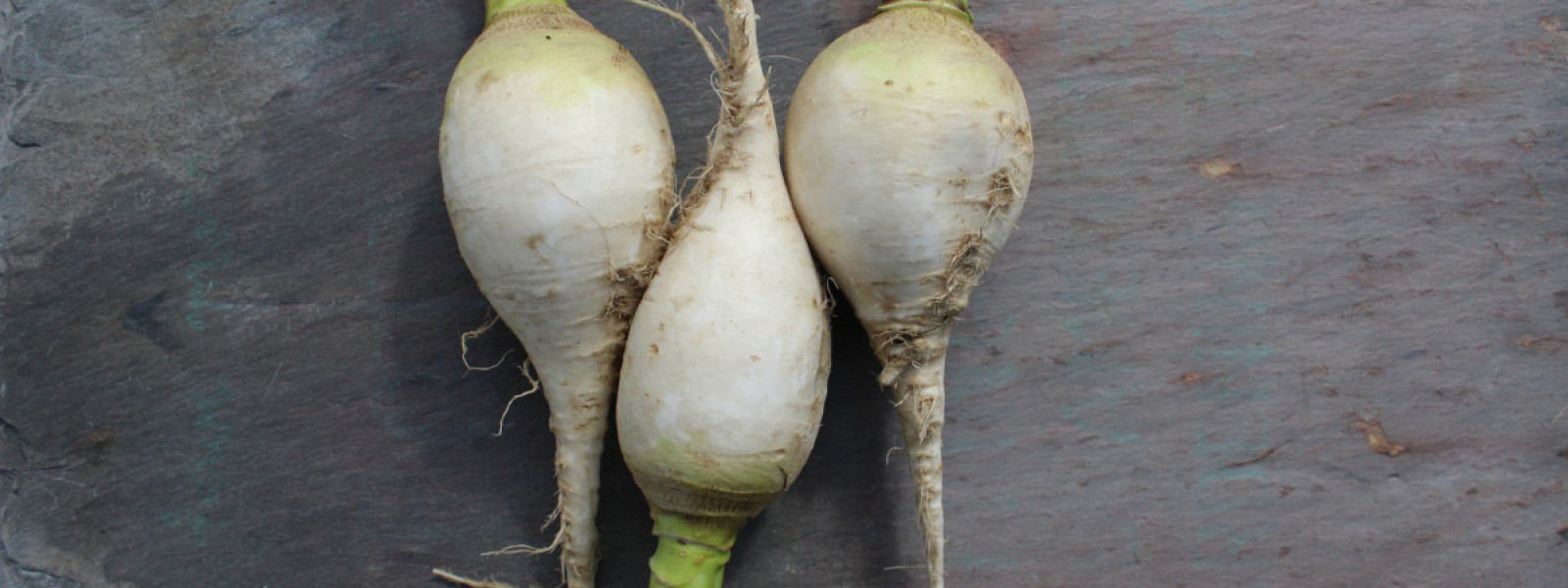Gilfeather Turnips: All About Them
The Gilfeather turnip, a rutabaga-turnip hybrid, is a root vegetable that is normally harvested after the first hard frost of the season. It is white rather than yellow inside, and it is sweet and creamy, not having the bite of a normal turnip.
It was first cultivated by John Gilfeather in the early 1900s at a farm on Gilfeather Road in Wardsboro, VT. Gilfeather was a secretive man. He wouldn’t say how he originally grew this unique turnip and went to great lengths to make sure he was the only one who could grow them. He carefully shaved the individual root hairs and cut the tops off each turnip before bringing them to market.
Somehow, William and Mary Lou Schmidt got a hold of some seeds and in the 1970s, a few decades after Gilfeather’s passing, they commercialized them and got them trademarked and certified as an heirloom botanical through the Vermont and United State Departments of Agriculture. In May 2016, the Gilfeather Turnip became Vermont’s state vegetable.
CULINARY TIPS
- Peel it first to remove the rough outer layer
- Roast it, mash it, puree it, or make a soufflé
- Use it in soups, bhaji, and latkes
HOW TO STORE
Do not wash before storing. Store in the refrigerator, in a perforated plastic bag or in the crisper drawer for 2-3 weeks. Store in root cellar for 4-5 months. For storage up to 12 months, cube and blanch for 3 minutes, then cool, drain, and pack into containers or freezer bags.
3 WAYS TO PREPARE
- Latkes! Grate and mix with eggs, scallions, flour, salt and pepper then fry ⅛ cup of batter on a skillet.
- Cheesy mash! Cube, boil, and mash a medium turnip, then fold in ½-¾ c. of Vermont cheddar.
- Gilfeather Soup! Sauté onion and garlic in butter. Add stock and turnips, cook until tender, and drain. Puree, then add half and half, nutmeg, salt, and pepper. Garnish with sautéed spinach.

